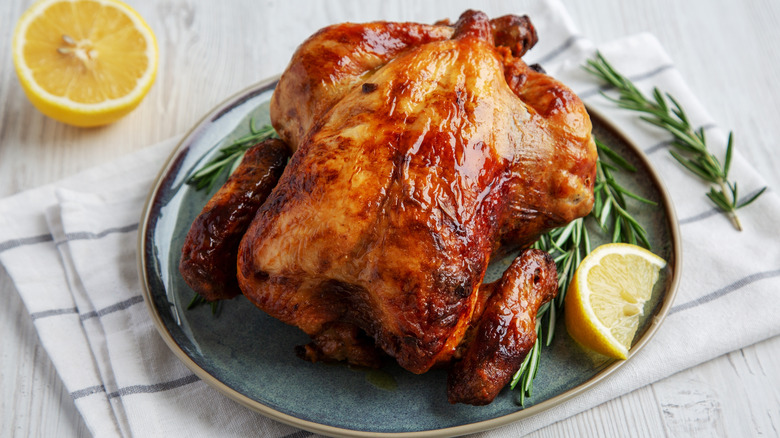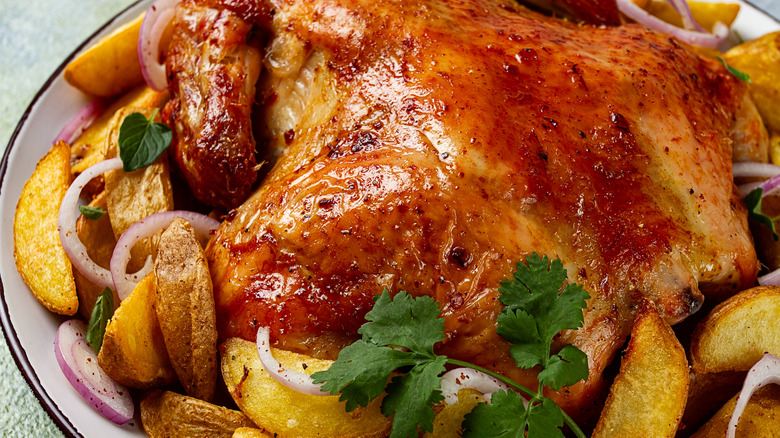The Hair Dryer Hack Giada De Laurentiis Approves Of For Crispy Roast Chicken Skin
We may receive a commission on purchases made from links.
A perfectly golden-brown roast chicken is a comforting, familiar meal that looks inviting, tastes delicious, and doesn't require too much work. It's one of the dishes Ina Garten is most known for and calls one of the simplest to make. However, ensuring that the chicken skin cooks up nice and crispy does take an extra step or two. There are different techniques to make it happen, including one that got a thumbs up from Giada De Laurentiis which involves (of all things) a regular hair dryer.
De Laurentiis tried it out in a video, saying that it makes sense since the hot air will help dehydrate the skin. After all, moisture is the enemy when trying to create crispiness. Water evaporates at 212 degrees Fahrenheit, creating steam which interferes with the skin's ability to get brown and crispy. (Browning doesn't occur until over 300 degrees.) After going at a raw chicken with the blow dryer for two minutes, Giada coated it with olive oil and roasted it. The skin came out crispy and brown — she declared the hack a success.
The blow dryer trick isn't actually new. Italian cooking legend Marcella Hazan used it in a recipe for duck in her 1978 cookbook "More Classic Italian Cooking" (reprinted in "Essentials of Classic Italian Cooking"). The "America's Test Kitchen" gurus also recommend it when you don't have time to overnight a salted chicken in the fridge.
More ways to make roast chicken skin crispy
There are other methods for achieving crispy skin that don't involve hair care tools. Already mentioned is salting the chicken generously all over and letting it air dry in the refrigerator overnight; allowing the salt to pull out moisture. You can also sprinkle a mix of baking powder, kosher salt, and black pepper on the chicken before putting it in the fridge for 12 to 24 hours. The baking powder helps break down proteins in the skin and creates tiny carbon dioxide bubbles, both of which promote crispiness. Still another technique involves pouring boiling water over the chicken.
Melted fat and other juices need to be able to drain from under the skin or they'll turn that crispy skin soggy. Give them a way to drip off as the chicken cooks by making horizontal cuts on its back, poking holes in the breast and thighs, or tunneling in with your fingers to separate the skin from the flesh.
There are a few overall guidelines worth keeping in mind. Bring the chicken to room temperature and pat it dry before cooking; roast at a hotter temperature, around 400 to 425 degrees; and don't baste the chicken with the runoff juices or anything with water (including butter). Oil, clarified butter, and other fats without a significant water content are fine, but it's best to coat the chicken with them before it goes in the oven. Finally, let the cooked chicken rest before you dig in.

